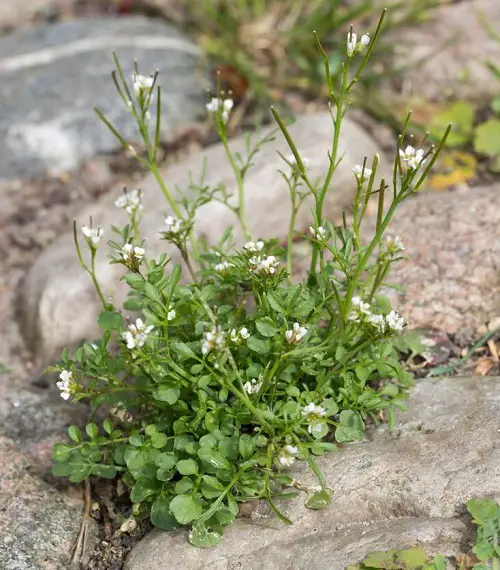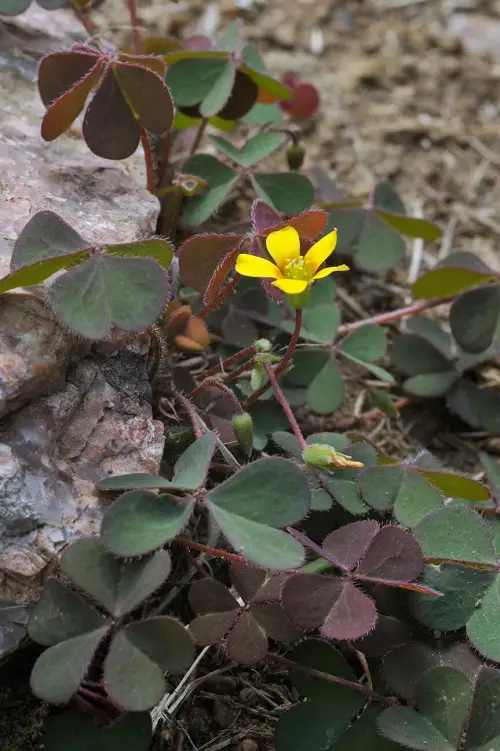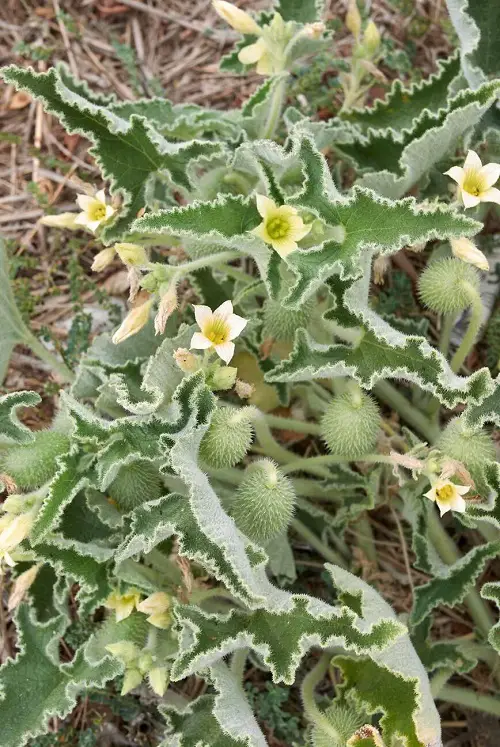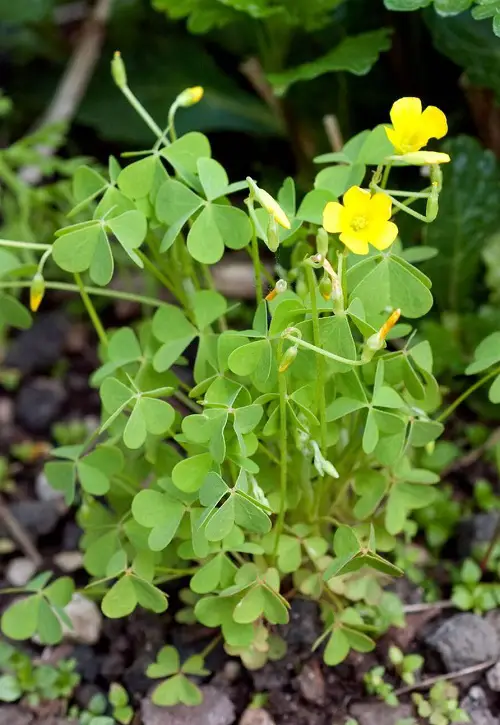There are Weeds That Shoot Seeds When Touched or Disturbed. They do this to disperse their seeds and increase their invasiveness.
Weeds can rapidly multiply through runners, seeds, offsets, and cuttings, taking up space and resources required by important plants planted around them.
They are tough and have many ways of spreading their numbers, one of which is shooting seeds when stimulated or disturbed. This is their way of reducing competition among seedlings and spreading more and farther from the mother plant to colonize. Won’t believe this? Check out the list below!
Weeds that Shoot Seeds when Touched
1. Hairy Bittercress

Botanical Name: Cardamine hirsute
Arguably the most notorious seed-shooting weed, the Hairy Bittercress is a cool-season weed that can spread year-round. It is identified by its small, fan-shaped, white flowers and a basal rosette of leaves.
If you accidentally touch the cigar-shaped fruit, be ready to search for seeds as far as 6 feet away, as it can catapult them that far. This shooting makes it a nuisance for gardeners, even though it’s a really cool phenomenon.
2. Smallflower Touch-Me-Not

Botanical Name: Impatiens parviflora
Small Balsam is a weed that releases its seeds forcefully if disturbed. It’s also considered invasive in many parts of the States, Washington being one of them. Don’t confuse it with Touch-me-not (Mimosa pudica)–that one is an ornamental plant.
It can be up to 5 feet tall and has bright orange flowers with spots/blotches and a translucent stem. The seed pods actually coil up tightly inside the fruit, and when touched, they uncoil rapidly, flinging the seeds outwards to fall as far as they can.
3. Creeping Wood Sorrel

Botanical Name: Oxalis corniculata
The Wood Sorrel is like the plant above but maybe on steroids and less pretty. Why, you may ask? This is because when stimulated with slight pressure, this weed shoots seeds up to a distance of 16 feet. Amazing, right?
But there are two sides to a coin, so along with being a weed, it is also used for food and medicine as most parts of this plant are edible. However, it has a sour taste, so if you want to try it’s best used in small quantities in salads or sauces.
4. Scotch Broom

Botanical Name: Cytisus scoparius
Native to Europe, this yellow-flower plant is dreaded on the west coast of the USA as it is considered a noxious weed there. Scotch Broom explosively shoots seeds when the pods dry out.
A mature plant can form thousands of seeds a year, and each seed can stay viable for up to 20 years. The weedy factor can once be overlooked due to its flowers, but what can’t is that the seeds, stems, and leaves contain great amounts of Quinolizidine alkaloids, which can lead to fatalities in livestock.
5. Squirting Cucumber

Botanical Name: Ecballium elaterium
Squirting Cucumber ejects its seeds with great force when ripe and disturbed, making it an interesting but invasive weed in gardens and fields. The plant has rough, fuzzy leaves and yellow flowers and produces elongated, green fruits. These fruits are highly bitter and poisonous and have the potential to even kill if ingested in a large amount
An interesting fact is that the Squirting Cucumber’s seed dispersal can launch seeds about 10 to 20 feet away. This plant’s squirting mechanism has one more feature—it squirts liquid as well, which can cause irritation upon contact with the skin. This is why it is always advised to handle this plant with care.
6. Common Woodsorrel

Botanical Name: Oxalis stricta
A close cousin of the Creeping Woodsorrel, the Common Woodsorrel has the same traits as the former. This weed can also shoot seeds up to lengths of 10 feet if bothered. It can grow in the poorest soils, therefore making it a common sight in woodlands and disturbed areas.
Its trademark physical attributes are its small yellow flowers and shamrock-like leaves that curl up at night and open back up when the sun shines bright.


